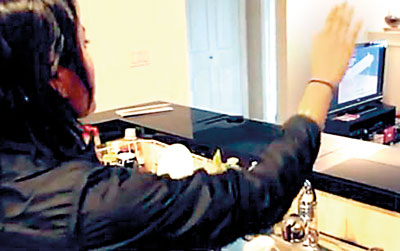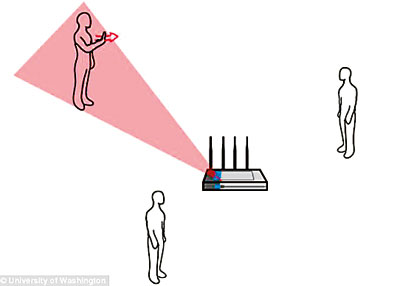Sunday Times 2
Control home appliances using only hand gestures
Too lazy to get up to switch the kettle on? Soon you may be able to simply raise your hand or nod your head from another room, and you’ll be moments away from a fresh cup of tea. This is the hope of researchers at the University of Washington who have developed technology that will allow people to control household devices with simple gestures.

A hand gesture changes the TV channel using WiSee technology. The system detects the changes in the electromagnetic waves of Wi-Fi signals as they reflect off a moving human body
The technology, named ‘WiSee’, is similar in concept to how Microsoft’s Xbox Kinect sensor works by using cameras to recognise gestures.
By adapting a Wi-Fi router and wireless household devices, the researchers developed a system that can detect specific movements without the need for sensors or cameras. They claim it is simpler and cheaper than similar gesture-recognition technologies.
WiSee works using the Doppler effect – the way a wave of sound or light changes frequency at the point it is observed depending on the source of the wave’s movements. A common example of the Doppler effect is the change in pitch of an ambulance siren as it passes. The researchers tested these gestures with five users in a two-bedroom apartment and an office environment.
Out of the 900 gestures performed, WiSee accurately recognised 94 per cent of them. It was found that as many as five people can move simultaneously in the same room without confusing the receiver said collaborator Sidhant Gupta, a doctoral student in computer science and engineering at the university, who has worked with Microsoft Research on two other similar technologies.
SoundWave, which, as its name suggests, uses sound waves to monitor whole-body gestures and Humantenna, which uses radiation from electrical wires. But WiSee stands apart because it doesn’t require the user to be in the same room as the receiver or the device. ‘This is the first whole-home gesture recognition system that works without either requiring instrumentation of the user with sensors or deploying cameras in every room,’ said Qifan Pu, who worked on the research project.

When specific gestures are used, it was found that as many as five people can move simultaneously in the same room without confusing the receiver.
WiSee detects the changes in the electromagnetic waves of Wi-Fi signals as they reflect off a moving human body.
© Daily Mail, London
Follow @timesonlinelk
comments powered by Disqus

